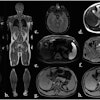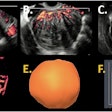 Dr. Filippo Pesapane, PhD, from the European Institute of Oncology (IEO) in Milan.
Dr. Filippo Pesapane, PhD, from the European Institute of Oncology (IEO) in Milan.
In the world of medicine, particularly in the demanding field of radiology, professional growth is not just a personal endeavor but a collective pursuit.
Drawing inspiration from the words of Julio Velasco, the coach who recently led the Italian women's volleyball team to Olympic gold, we can glean valuable lessons that resonate deeply with our roles as radiologists. The wisdom embedded in his coaching philosophy is universal, extending beyond the sports arena into our medical practices.
Below are 10 points to bear in mind:
1. Leadership through conviction, not coercion
Velasco's insight that "the coach convinces to act, rather than acts himself" speaks directly to the challenges faced by many experienced radiologists transitioning into leadership roles. Just as former athletes may struggle to delegate rather than dominate, so too can seasoned radiologists find it difficult to shift from hands-on tasks to guiding others. Effective leadership in radiology requires a delicate balance of doing and managing, where the goal is not to solve every problem personally but to empower the team to find solutions.
2. Seek reasons, not blame
In a high-stakes environment like radiology, errors are inevitable. Velasco advises us to look beyond assigning blame and focus on understanding the root causes of mistakes. This approach fosters a culture of learning rather than fear, where the entire team is engaged in continuous improvement. When we seek to understand the "why" behind an error, we pave the way toward more effective problem-solving and innovation.
3. Define roles, respect boundaries
In sports, as in radiology, the importance of clearly defined roles cannot be overstated. When everyone understands and respects their role within the team, the collective effort is stronger. A defender who tries to score might occasionally succeed, but it disrupts the team's dynamics and can lead to vulnerabilities. Similarly, in radiology, when team members overstep their roles, it can result in inefficiencies and errors. A well-structured team, in which each member excels in their designated role, is crucial for success.
4. Celebrate the effort, not just the outcome
When children attempt something new and fail, we celebrate their efforts. Velasco suggests that this attitude should extend into professional life. In radiology, where innovation and the adoption of new techniques are essential, every attempt at improvement should be acknowledged. Celebrate small victories, even those that come from failed attempts, as they reflect a commitment to growth and learning.
5. Clarity in communication: Yes means yes, no means no, and there is no space for "Yes, but..."
In the complex and fast-paced world of radiology, clear and decisive communication is key. Velasco's principle that "yes means yes and no means no" underscores the importance of conviction in decision-making. Ambiguity in communication can lead to misunderstandings and mistakes, which are particularly costly in medical practice. Ensure that your words are backed by clear intent and follow-through.
6. Recognition fuels growth
It's easy to overlook the power of positive reinforcement in a high-pressure environment. Velasco reminds us to say "well done" more often, even to those who are consistently high performers. In radiology, recognizing and appreciating the hard work of colleagues not only boosts morale but also encourages continuous improvement. A simple acknowledgment can inspire someone to push their limits further.
7. Encourage risk-taking and innovation
A true leader, according to Velasco, knows when to push their team into uncharted territory. In radiology, this might mean encouraging a colleague to tackle a complex case or adopt a new technology. By pushing the boundaries, we not only advance our own skills but also contribute to the evolution of the field. The leader's role is to instill confidence in their team, knowing that even if the waters are rough, they have the capability to swim.
8. The power of "Why"
Conflict and hesitation often stem from unspoken fears or misunderstandings. Velasco's advice to ask "why" more often is particularly relevant in a radiology department, where decisions can have significant consequences. By probing deeper into the motivations and concerns of your team, you can address underlying issues, foster open communication, and drive more effective collaboration.
9. Focus and dedication
Velasco's personal story of sacrifice and dedication serves as a reminder that true success comes from unwavering focus. In radiology, where the pace of change is rapid and the stakes are high, it's essential to remain dedicated to your chosen path. This might mean taking on additional training, pursuing research, or focusing on a subspecialty. The key is to stay committed and monitor your progress diligently.
10. Reflect, learn, and move forward
Finally, Velasco's mantra, "winners celebrate, losers explain," captures the essence of resilience. In radiology, not every case will be a success, but each one offers a learning opportunity. Reflect on the outcomes, understand what went wrong, and use that knowledge to improve future performance. The ability to learn from setbacks is what ultimately drives long-term success.
The principles that led Julio Velasco's team to Olympic victory are not just applicable to sport — they are a blueprint for leadership and professional growth in any field, including radiology. By embracing these lessons, we can not only enhance our own careers but also contribute to the collective success of our teams and the broader medical community.
Dr. Filippo Pesapane, PhD, is a radiologist, at the European Institute of Oncology (IEO), Milan. He is a member of the Editorial Advisory Board of AuntMinnieEurope.com, and he was the recipient of the 2019 EuroMinnies Radiology Rising Star award.
The comments and observations expressed herein do not necessarily reflect the opinions of AuntMinnieEurope.com, nor should they be construed as an endorsement or admonishment of any particular vendor, analyst, industry consultant, or consulting group.




















